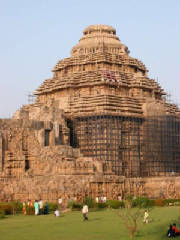|
Background
Between the years 1200 AD and 1535 AD the Inca Empire lived in a part of South America that extended from the Equator
to the Pacific coast of Chile. The Inca rule of the area began with the conquest of the Moche Culture in Peru.
The Inca were well known for their strong and powerful army and it was because of that fierceness, and their hierarchical
system, that they became the largest Native American society. The golden ages of the inca came to a devastating end
in 1535 when the Spanish conquistadors took over the Inca territory.
Class System
The Inca society was organized by a strict hierarchical system. There were many different levels to this system
with the Sapa, high priest or ruler, and the military commander at the top. Famiy members, including the women, were
usually councilors to the Sapa. The temple priests, architects and regional army commanders were the next level of this
system. The lowest classes of their system consisted of artisans, army captains, farmers, and herders. Farmers
provided most of the resources and wealth for the rest of the population. They had to pay taxes in the form of gold,
which was then distributed among the higher classe.

|
| The Sun Temple at Machu Picchu. |
|
 |
|
|
|
 |
|

|
| An Inca man in ancient Inca land. |
Agriculture
The Inca's comprehension of how irrigation can benefit agriculture is evident in the expansion they did into the highland
areas. They had developed drainage systems and canals to expand their crops. Potatoes, tomatoes, cotton, peanut,
and coca were just some of the few crops that the Inca grew. They also had uses for llama, using it not only for meat
but also for transportation. They had plenty of resources, and because of this it helped their population grow due to
the subsistence level.
Religion
Religion, like in nearly every ancient society, played an important part in Inca society. The highest point in
an Inca village was reserved for religious purposes, and this was because it was the area closest to the sun. The sun
represented their major god, Inti. The Inca had six major gods, which represented the moon, sun, thunder, lighting,
earth, and sea. The Inca also had shamans who believed in animal spirits living on earth, with heaven being depicted
as a condor and the underworld the anaconda. The Sun Temple in Machu Picchu, Peru was used as a religious calendar that
helped the Inca mark the winter and summer solstices.
|
 |
|
|
|

